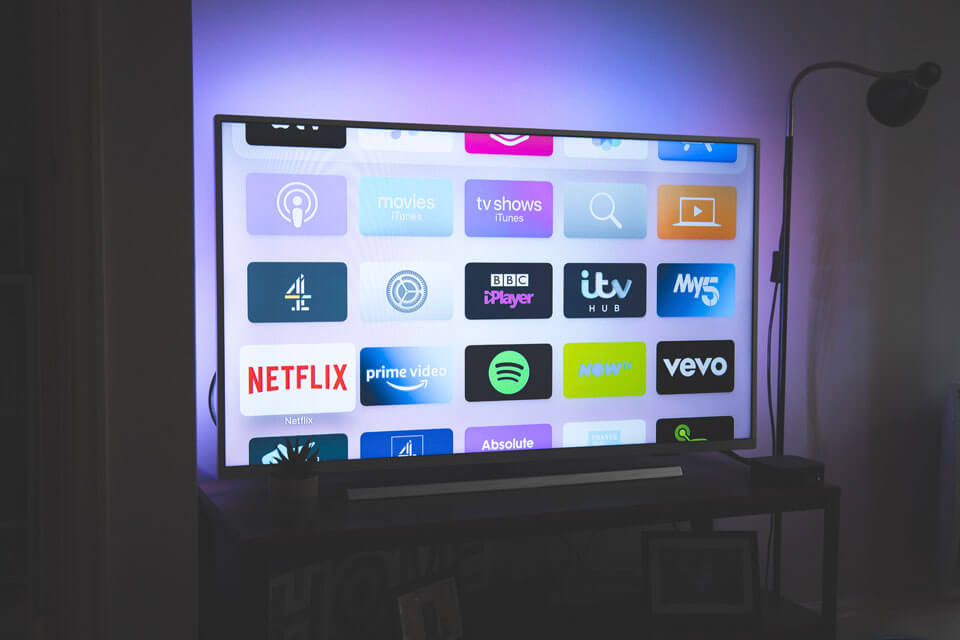
15Feb2020
Industry Reviews
Comments: No Comments.
Television has long been a main source of entertainment, but nowadays, as the content unfolds in real-time and more people are more busy, they want to watch whatever, whenever and wherever they want instead of gathering the entire family around the TV to watch a show that is aired in a certain time. Though being the youngest comparing with traditional TV services, pay TV services (cable, satellite, IPTV), OTT TV is in the spotlight.OTT TV services can basically be cracked down into 4 kinds of video-on-streaming services: AVOD – free and based on ads, SVOD – paid based on subscription, TVOD – paid based on the content users watch and EST – paid based on download. Globally, Research and Markets forecasted that the OTT services market size to grow from USD 81.6 billion in 2019 to USD 156.9 billion by 2024, at a CAGR of 14%.
Not different from the rest of the world, Vietnam – with a young generation is also experiencing a trend of people switching from the old traditional television service to OTT TV which allows them to watch movies and other shows on the internet. The national market is reported to be USD 86 million in 2019 and going to rise at a CAGR of 10.39%, to USD 141 million in 2024, by Statista.
According to the Department of Broadcasting and Electronic Information, Vietnam has 64 million Internet users – ranked 12th in the world and 6th in the region; more than 14.6 million fixed broadband subscribers; over 60.2 million mobile broadband subscribers (until November 2019). Moreover, they also stated that Vietnamese internet users spend averagely 2h31 to watch online TV and video on demand. As Nielsen reported in 2016, Vietnam is now one of the countries leading the trend of online video with 9 out of 10 respondents saying they watch videos online weekly. All of these statistics show that Vietnam is a potential market with promising consumers.
In recent years, the market has been crowded with the presence of 4 groups of OTT TV services providers. The 1st group including broadcasters such as VTV, SCTV, K+ who expand to OTT and use internet as transmission platform. The 2nd group consists of units that take content from the broadcaster or produce their own content for television such as Viettel, VTC, MobiFone; the next group is the original content production units such as Cat Tien Sa, BHD. And the last group is the platform service providers (platforms) such as FPT Play, ZingTV, Clip, VNPT Media, etc. and foreign providers Youtube, Netflix, iFlix, HBO GO. In last summer of 2019, the 2 OTT TV services from giant Chinese providers WeTV (Tencent) and iQIYI (Baidu) also allow Vietnamese users to use their service and pay monthly via Apple Store or Google Play Store.
A survey from Department of Broadcasting and Electronic Information also shows that YouTube has the highest number of views of 2.6 million, Netflix second is 1.3 million, FPT Play ranks third with 900,000, ClipTV reaches 350,000; VTVGo reaches 250,000. At the present, the foreign sides seem to have more favor and OTT TV domestic players are facing some troubles to compete with them. In order to make this service work perfectly, it’s necessary to qualify 4 factors: stable and strong internet from both users and the broadcasters’ servers, Government’s support, interesting content and fair prices.
Photo by Thibault Penin on Unsplash
Up to November 2019, Vietnam’s average download internet speed in fixed broadband is 42.45 Mbps and Mobile’s is 29.08 Mbps. Though it’s enough for the users to have a high definition streaming but the domestic broadcasters’ servers are not stable enough to always transmit neat quality.
On the Government’s side, they still haven’t provided a good support the domestic companies. While Vietnam companies always have to pay full tax, it is almost impossible to collect taxes from foreign OTT enterprises with current tax policies. For example, to bring a foreign movie into Vietnam, domestic sides have to pay fully 3 kinds of taxes: copyright tax of 10%, value added tax of 5% and corporate income tax of more than 20%.
There are some idea suggests stopping purchasing foreign content and concentrating on local content. However, it leads to the third problem: interesting content. In an effort to compete with foreign streaming services’ original content, the domestic players have tried to produce original Vietnamese content to attract the users such as Glee Vietnam, Descendants of the sun Vietnam from Danet and the on-the-way The Stars Where You Came. Despite the headlining advertisement, the result wasn’t good as users reviewed that these drams are not only adaption of foreign dramas but also have weak plot. So at the moment, without the foreign movies or dramas, it’s impossible to attract Vietnam users. On the bright side, local players still have sports’ broadcasting rights to gain users. For example, MyK+ NOW have been on the spot for years due to their rights on streaming English Premier League and FPT for Serie A.
We believe price is also a key factor that impacts users’ choice. We break down the pricing of some current OTT players in Vietnam.
| Name | Country | Type of service | Pricing | No. of streaming at the same time | Note |
| MyK+ NOW | Vietnam | SVOD | USD 5.4/month | 1 | An account can be logged in 3 devices |
| FPT Play | Vietnam | AVOD & SVOD | Free – USD 6.04/month | 5 | N/A |
| Fim+ | Vietnam | SVOD & TVOD | USD 2.16/month | N/A | – Charge to buy or rent some movies – Have promotion with bank partners |
| ClipTV | Vietnam | AVOD & SVOD | Free – USD 2.16/month | 4 | N/A |
| Danet | Vietnam | AVOD, SVOD & TVOD | Free – USD 2.16/month | N/A | Charge to rent some movies |
| Netflix | America | SVOD | USD 7.77/month – USD 11.23/month | 1 – 4 | N/A |
| iFlix | Malaysia | SVOD | USD 2.6/month | 2 | N/A |
| HBO GO | America | SVOD | USD 3.41/month | 5 | Stream on FPT Play |
| WeTV | China | SVOD | USD 1.08/month | N/A | N/A |
| iQIYI | China | SVOD | USD 2.12/month – USD 2.55/month | N/A | N/A |
Source: from their websites
We can see that the consumers have more than 10 OTT TV local options but only MyK+ NOW is charging, almost all other providers are streaming for free, or free for limited content and charge for the premium content. It’s reasonable as everyone is still exploring the market and educating the consumers. Fim+ executive shared that there are only a few million premium VOD subscribers in Vietnam, an insignificant number in a market of nearly 100 million potential users. The giant Netflix who is dominating the OTT industry across the world, despite being in the market since 2016, only attract more than 380,000 paid users and has revenue estimated at more than USD 40 million till December 2019. Vietnamese people’s habit to watch movies and TV shows on illegal streaming websites, and the preference for cash payments are possibly the 2 main reasons that makes even Netflix struggle. The later can be solved in the near future as we predicted in the August article but illegal streaming websites are really an obstacle. In February 2019, executive vice president of FPT Telecom JSC said the company calculated there are about 50-60% Vietnamese consumers access illegal websites – means the legal OTT TV providers may miss out more than half of the consumers.
Despite the current number doesn’t sound promising, the investors are making losses but the OTT TV media is an inevitable trend. Netflix is still carrying billions of dollars in debt, but no one says a 38th brand in the world is a failure because they own a much more valuable thing – consumers’ data. In our opinion, the future of television, or the content inside the television will be customer-driven. In 2019, we’ve seen a lot of successful Vietnamese movies in the cinema such as Dreamy Eyes and Furie with revenue is USD 6.9 million and USD 5.3 million respectively, even equal to some foreign blockbuster movies’ revenue. This prove Vietnamese customers are willing to pay and to watch if the content is made neatly. In the next 5 years, we look forward to see more and more interesting original and highly personalized content that made directly for Vietnamese from both the domestic sides and hopefully, foreigner sides as they did with South Korea and Japan’s markets. The fact that no one hasn’t really dominated the Vietnam OTT TV market proves that this fresh and hot pie is still enough for everyone to get their slices.
Ly Nguyen – B&Company Inc
Reference:
















